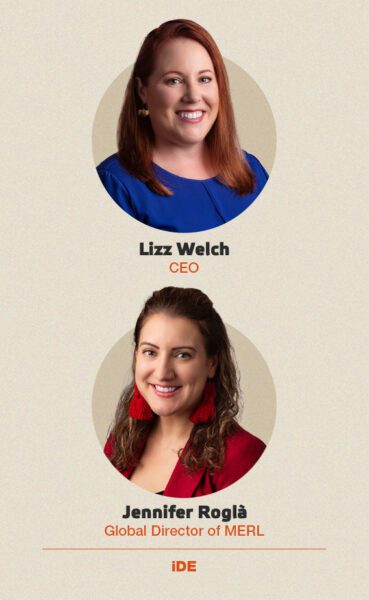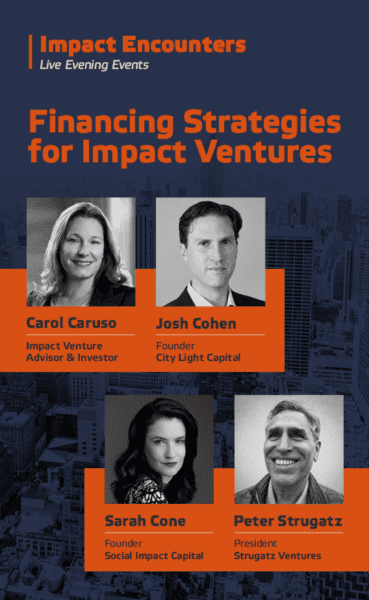Art is Everything
The economic and social impact of creative ventures
Now comes the hard part.... Plumbing

I am, in a minor way, an investor, and while I value investment capital’s role, I know that capital is not uniquely important to achieving the SDGs. Nor are big numbers alone. As seductive as billionaires’ and the finance sector’s star power may be for soothing our nerves in these grim times, investment capital will be useless if we see it as an isolated mechanism of change.
Gillian Marcelle wrote, “Finance is not the binding constraint,” in a December 2021 post addressing the COP26 announcement of a consortium commitment of $130 trillion against climate change. She cited the broader context of investment, such as financial eco-systems and hard infrastructure. I second Dr. Marcelle in cheering them on and raising the stakes.
Investment capital will be useless if we see it as an isolated mechanism of change.
When Mark Carney announced the $130 trillion commitment of GFANZ, he said, “We now have the essential plumbing in place to move climate change from the fringes to the forefront of finance.” While I am an ardent fan of Mr. Carney, I beg to differ. He has a big capital consortium. But the plumbing —invisible, undervalued, pervasive, and necessary, as it now exists, is unsound.
Announcing capital availability isn’t the hard part. Performance at the enterprise level is the hard part. But it’s doable. This will require skirting deadly perils, embracing down-to-earth saving graces, and investing in the unglamorous work of fixing the plumbing.
The plumbing —invisible, undervalued, pervasive, and necessary, as it now exists, is unsound.
The $130 trillion announcement at COP 26 seemed almost routine: another day, another massive public commitment of capital disconnected from the market. Ho-hum. Where are the deals? The disbursements? The performance metrics for the investments, projects, and enterprises that will put the capital to work?
This apparent victory of talk over walk reminds me of my years in the community development world in the 1980’s and 90’s. Then, as now, a drumbeat of large, very public “soft commitments,” to disinvested communities by large banks were a ritual. Then, as now, they were met with universal applause.

When the limelight faded, however, those of us on the ground saw that the bold talk did, too. Announcements of “money disbursed” were rare. Financings were stop/start and slow. Today’s announcements and subsequent silences are unnervingly similar.
Is it possible that financial institutions, asset managers, and global DFIs approach the ESG market the same way as U.S. money center banks did (and do) for community development? Maybe for them, SDG investment is a troublesome aberration, separate from and unrelated to the real business of finance, similar to the way that “community development finance” is viewed as separate from the real business of large financial institutions.
That would be unfortunate. We have real work to do.
Capital, alone, has no agency. Enterprises, as organizing machines for both capital and revenue have agency. Their business models, employees, customers, products, supply chains, and services spin money into impact. As Henry Fernandez, CEO of MSCI, noted in an interview: “The heavy lifting on solving the climate change problems of the world is going to be at the operating company level.“
 And it’s complicated there, as Paul Hawkins reminds us: “Every industry is a system, and… [is] extractive, whether it be energy, food, agriculture, pharma, transport, clothing, or healthcare…. Greenhouse gas emissions are created by an extraordinary variety of activities, from machining to smelting, rail systems to refining, air freight to office towers. Energy-intensive processes involve chemical, physical, electrical, and mechanical procedures. The external impacts … include … pollution, toxic emissions, poverty wages, loss of biodiversity, deforestation, destruction of Indigenous cultures, and advertising that encourages overconsumption.”
And it’s complicated there, as Paul Hawkins reminds us: “Every industry is a system, and… [is] extractive, whether it be energy, food, agriculture, pharma, transport, clothing, or healthcare…. Greenhouse gas emissions are created by an extraordinary variety of activities, from machining to smelting, rail systems to refining, air freight to office towers. Energy-intensive processes involve chemical, physical, electrical, and mechanical procedures. The external impacts … include … pollution, toxic emissions, poverty wages, loss of biodiversity, deforestation, destruction of Indigenous cultures, and advertising that encourages overconsumption.”
So while investors are influential, it is people in enterprises who will problem-solve to reach carbon and SD goals. A skillful capital provider understands what capital can and cannot do and structures investment for maximum utility on the ground. Executives, managers, employees, and customers are the ones who make it happen in the complex environment of each enterprise.
I would love to think that the $130 trillion commitment might remove “capital availability” from the “good and the great’s” long list of excuses for not moving forward. And that the most skilled bankers are looking at the enterprise level when designing financial instruments, identifying markets, and crafting deals. Without creative bankers placing capital in actual businesses on the ground, the $130 trillion will have little impact.
Without creative bankers placing capital in actual businesses on the ground, the $130 trillion will have little impact.
Enterprises need reliable, repeatable net revenue for financial sustainability. In my experience, the hurdle to capital investment in the abandoned markets of my community development days was more likely to be lack of revenue than lack of capital.
And while capital builds and rebuilds the enterprise engine, revenue is the fuel. Its absence stymies investors as well as managers. Even if a given enterprise makes a net positive contribution to the SDGs, it will fold without profits from net revenue.
While capital builds and rebuilds the enterprise engine, revenue is the fuel.
Returns and exits require net revenue, too. Is revenue flowing in? Are there committed retail buyers? That revenue will magnetize capital investment.
Today, investors and underwriters may mistrust the revenue visibility of SDG-friendly and ESG-positive business models. Perceived risk means investors stay on the sidelines (and continue public announcements of capital availability all the while).
Enter government. At times of uncertainty — during wars, for example, or disasters, or when technology is untried — government is the go-to source of reliable revenue (and capital). Government subsidy has been standard in American capitalism from our earliest days. Today, The U.S. government is the largest purchaser of goods and services on the planet, providing over half a trillion dollars in revenue to businesses annually. The long list of for-profit companies that rely on government include Amazon, Boeing, Intel, Exxon, Tesla, and Google.

This is a time to buy as well as to invest for the long term, where returns accrue to the common good over generations. This is a time for that multi-generational perspective if there ever was one.
If governments, domestic and foreign, redesign both subsidies (e.g., tax abatements) and revenue (grants, purchasing policies, and contracts) to support companies working toward SDG goals, capital will flow. Beyond government, large companies themselves can commit to purchasing vehicles, services, food, and more — that incentivizes progress toward the SDGs.
Are markets subject only to natural, immutable rules? Is “capitalism” of the unfettered variety controlled only by the financial equivalent of the laws of physics? No. It’s not true now (and wasn’t even true in the world of Adam Smith).
Regulation, culture, customs, algorithms, subsidies, behavior, technological change, consumer and investor whim, and similar social constructs are the muscles and lifeblood of the “invisible hand, ” not a mystical, superhuman sovereign force. While quants may find ways to manipulate market metrics this only demonstrates that they are man-made. “Free” is a fanciful and deceptive mask when it comes to global markets.
Putting aside the operational challenges to the economic transformation we seek — such as capital availability, revenue visibility, and rapid technical change — the barriers of culture, custom, and cowardice loom large. The invisible structures of the economy are very much with us, and comfortable inertia prevails, notwithstanding the urgency and wisdom of fundamental change.
Here are three ideas — none of them new — for re-plumbing our economy, changes that will help fulfill the promise of GFANZs extraordinary pledge. Without change, all the brave talk, public capital commitments, and assurances of net-zero or carbon negative operations will fail. Capital investors will be unable to make good deals; fiduciaries will continue to cower behind a failed construct; and corporate leaders, stymied by uncertainty when working to meet ESG goals, will dither.
Fiduciary Duty: There is much earnest talk about ESG emanating from large asset owners such as pension funds and asset managers. But when the moment comes to do a deal that deviates from “business as usual,” there is a scurrying sound as managers and lawyers take shelter behind the superstitions guiding “fiduciary duty.” Endowed, mission-centric organizations such as foundations and universities, as well as publicly chartered development finance institutions cling to “fiduciary duty,” to excuse the environmental, human rights, or community damage done by the companies and projects they invest in.
Business as usual is not compliant with fiduciary duty, especially now. The ground has shifted, and a petrified view of fiduciary duty is a danger to clients, plain and simple. This is not new. As a top Goldman Sachs executive noted a few years ago: “ESG is simply commonsense 21st Century risk management.” And ESG investing is commonsense fiduciary duty.
The ground has shifted, and a petrified view of fiduciary duty is a danger to clients, plain and simple.
Time Horizon: It’s pervasive. Build-in time limits in products, including financial products, are invisible. Is a risk financially material to a business if it will harm profits in one year? Three? Five? Does climate change pose material risk to a homebuilder this year? An oil company? An insurance company? Short-termism in investment management, coupled with standard profitability assumptions, useful life expectations, accounting rules, taxation, management strategy, and most importantly, board governance protocols undermine progress toward the deep investments we must make now. If rating agencies, managers, legislators, regulators, actuaries, and accountants modify — or at least examine — built-in assumptions that undermine real risk management, we can make progress. Without change, we’ll be stuck with more deception and stalling.

Finance and Accounting Rules: The accounting world has made hard-fought progress on encompassing ESG in reporting standards: the Value Reporting Foundation notes that over half of the Global S & P 1200 now reports on ESG topics using SASB metrics in their external reporting to investors. As with all progress, there’s still work to do. Administrators, regulators, and legislators must change the rules of banking, insurance, real estate, and securities markets to accommodate an amended reckoning of risk and return, starting from SASB and broadening from shareholder to stakeholder topics.
It will take extraordinary pressure for Congress to act where necessary here in the United States, and it won’t happen without concerted effort from business lobbyists. Maybe just a billion of that $130 trillion can be applied to investment in political muscle, social capital, and rewriting the rules.
It’s a myth, of course, that investors with financial capital can act alone to make change. Capital is influential and catalytic, but it can have no direct impact — positive or negative — if it lacks an entity to invest in, such as an enterprise, project, product, or program. Enterprises, in turn, are doomed without customers (and products and revenue). And the products and revenue from sales won’t materialize without employees and managers to run the operation. Nothing happens without all the parts of that system turning over —even when capital is in ample supply.
In any and all ways we can, we must, help carbon negative and human positive enterprises dominate the global economy.
As investors, we can’t afford to view capital investment in isolation. We, too, must lobby governments for ESG market regulations, advocate for accounting and fiduciary rule and regulation changes, buy green, work to help create a business environment where our investees and supply chain businesses can succeed, and recalibrate our own enterprises. In other words, in any and all ways we can, we must, help carbon negative and human positive enterprises dominate the global economy. Large announcements of capital availability won’t get us there.
The rules, culture, and rituals of the current market — its plumbing, as Mr. Carney would put it — has failed us, and it’s time to reckon with that reality. To paraphrase Walt Kelly’s Pogo, “We have met the plumbing and he is us (and he needs to be fixed).”
Related Content
Comments
Deep Dives
RECENT
Editor's Picks
Webinars

Featuring
Lizz Welch & Jennifer Roglà
iDE
May 16 - 12:00 PM EST

Impact Encounters
May 22 - 6:30 PM EST
News & Events
Subscribe to our newsletter to receive updates about new Magazine content and upcoming webinars, deep dives, and events.
Become a Premium Member to access the full library of webinars and deep dives, exclusive membership portal, member directory, message board, and curated live chats.
0 Comments